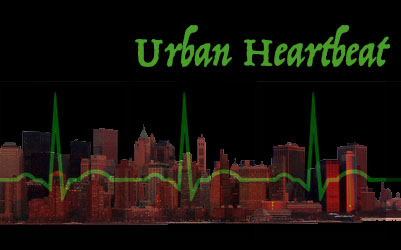 Faculty: Bilmes, Blaauw, Dutta, Jafari, Jones, Lee, Murray (co-lead), Pappas, Rosing (lead), Rowe]
Faculty: Bilmes, Blaauw, Dutta, Jafari, Jones, Lee, Murray (co-lead), Pappas, Rosing (lead), Rowe]
This task focuses on a visionary and long-term challenge problem that serves to drive and test technology development in TerraSwarm. Specifically, the high-level goal is to show that "urban health" can be monitored and predicted through large scale deployments of sensors, both mobile and fixed; strategic placement of "immobiles" providing localized cloud-like services; machine learning for context formation and anomaly detection; optimization for maximizing information extracted from data; and adaptation to changing resources, including opportunistic exploitation of mobiles and wearables, device failures and additions, and deployable mobile vehicles carrying networking and SwarmBox services. Here “urban health” broadly means forming context information that can be used to predict infrastructure failures, sudden changes in the urban environment, unusual citizen activity, or opportunities for revitalization. It includes modeling the behavior of people using larger datasets from population studies to understand better how people interact and affect swarm dynamics at an urban scale. Aspects of the problem include at least:
- Building context awareness from limited and noisy sensor data.
- Anomaly detection.
- Distribution of sensors to allow for understanding stress and rebirth of a city.
- Control of mobile sensors and placement of immobile sensors.
- Adaptive movement of tasks among mobiles, immobiles, and the cloud, as determined by context.
- Design of system architectures that scale to address swarm size problems.
- Obtaining location and proximity information. DoD applications to nation building, allowing for macroscale understanding of normal city dynamics.
- Civilian applications to urban renewal in stressed cities such as Detroit.
- Interactions between the society behavior/habits and the swarm of devices.
- Use of sensors in "resource starved" environments (like third world cities) which are not providing rich data sets for higher level analytics.
- Preserving privacy, for example by leveraging the SwarmBox architecture to keep sensor data local by default, but publish only summary statistics.
There is a rich set of possible sensing modalities that can contribute to such urban context formation, including collecting acoustic, seismic, air quality, image, and chemical data. Consider for example acoustic data. Sound can help characterize many aspects of a city: traffic; rhythm; daily, weekly, and yearly cycles; curfews; estimates of the number of people on the streets at what times and neighborhoods, and perhaps their "mood" from the aggregate conversation patterns; and time, locations, and amount of gunfire, altercations, etc.
In addition to DoD and urban revival applications, there are applications to health. The long-term negative health impacts of urban noise are beginning to be quantified, and the results are disturbing; a large-scale World Health Organization study in Europe with solid methodology estimated a collective average loss of 3-4 months of lifespan of Europeans due (largely) to increased low-level-stress-related heart-attack risk induced by environmental noise. Large-scale noise monitoring is extremely expensive today, so it’s very rarely done, but particularly when coupled with the vision of the deployment of the "immobiles," it starts to look viable and cost effective. Similarly, medical studies have shown that frequent exposure to air pollutants dramatically increases incidence of asthma, one of the top chronic conditions in the nation. Leveraging both mobile and immobile systems to understand how individual characteristics (genetics, personal history etc), daily choices and exposure to pollutants over time contribute to development of asthma. Another possible angle on this project is to opportunistically leverage mobiles and wearables, the latter of which are expected to greatly increase in number in the next few years. Specifically, a wealth of information can be extracted from sensors carried on these devices, but the challenge is to translate the raw data into context awareness. What does it mean when many proximate heartbeats are elevated, for example? Data analytics and machine learning will play a critical role.
The Urban Heartbeat task is part of the Proactive Worlds theme.


